Auction:
Late spring, 2022
Online Auction
Absentee Bidding:
By e-mail, mail and telephone
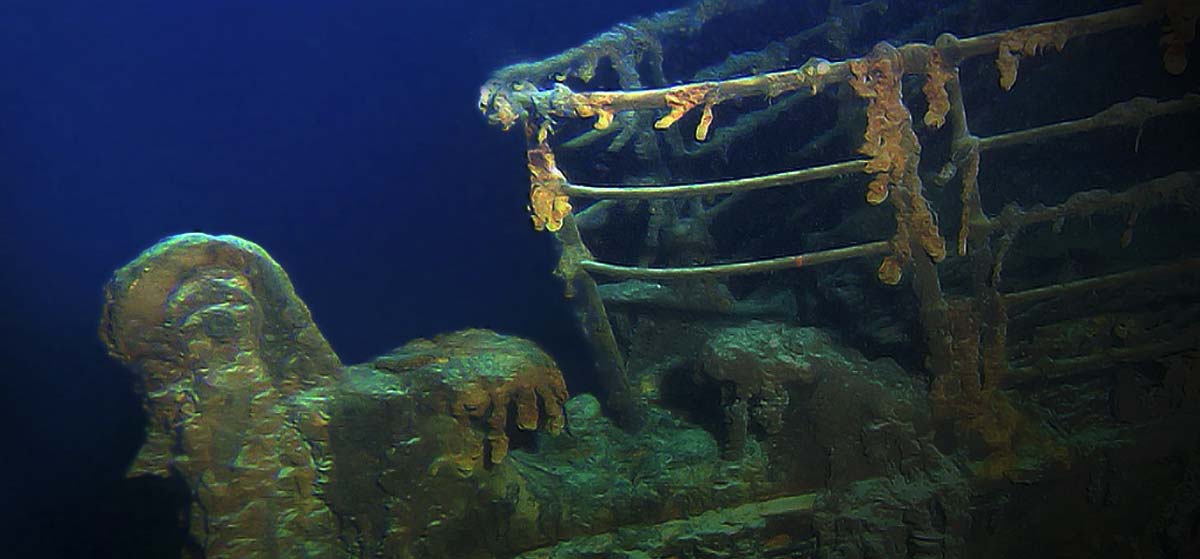
In 1985, Dr. Robert Ballard of the Woods Hole Oceanographic Institution discovered the wreck of the RMS Titanic. As the most fabled of all ocean liners, questions about where on the ocean floor the ship lay had been a compelling issue almost since the tragic April 12,1912 sinking. News of the Titanic’s discovery dominated global headlines.
Two years later, in 1987, renowned explorer G. Michael Harris led an expedition to salvage approximately 2,000 artifacts from the RMS Titanic which rested on the ocean floor nearly 13,000 feet (4,000 meters) underwater, three hundred and seventy nautical miles south-southeast of Newfoundland, Canada.
Harris founded RMS Titanic, Inc and the company ultimately obtained sole rights to salvage the sunken vessel. Following the initial 1987 effort, subsequent dives were made between the years 1993 through 2000 resulting in a total recovery of more than five thousand artifacts. RMS Titanic produced multiple museum exhibitions using the salvaged artifacts to educate the public about the international incident.
A United States Federal Court, in 1994, ruled that any object (outside of the items salvaged in the original 1987 operation) could not be sold and must be used by the salvager for educational purposes. This ruling exempted any coal that was salvaged.
In 1999, after a contentious shareholder battle for control of the company, management under the leadership of George Tulloch prevailed, and as a token of appreciation from Mr. Tulloch for Mr. Harris's loyalty during the shareholder revolt, Mr. Harris was gifted four artifacts from the 1987 dive upon his retirement from the company.
In the early 2000’s, the Federal Court ordered that items from the 1987 recovery dive be added to the other Court-protected items that could not be sold. However, since four artifacts from that dive had already been gifted to Mr. Harris, those four pieces were exempt from the Court's ruling and hence, are the only documented Titanic artifacts having laid on the ocean floor for over seventy years which are now allowed to be sold. Mr. Harris quietly enjoyed possession of his prized artifacts until their title was transferred to the current owner as part of a business transaction.
A November 29, 1999 article about the Titanic that appeared in the New York Times stated "No items ever to have been brought up from the ocean floor have been sold.” Accordingly, we think it fair to state that for those who value the history of the Titanic, the chance of acquiring these four artifacts will be a truly extraordinary opportunity.
The four treasured Titanic artifacts - a British gold coin, two United States bank notes and a bowling ball-sized chunk of coal - will be offered at auction by Guernsey’s late spring 2022.
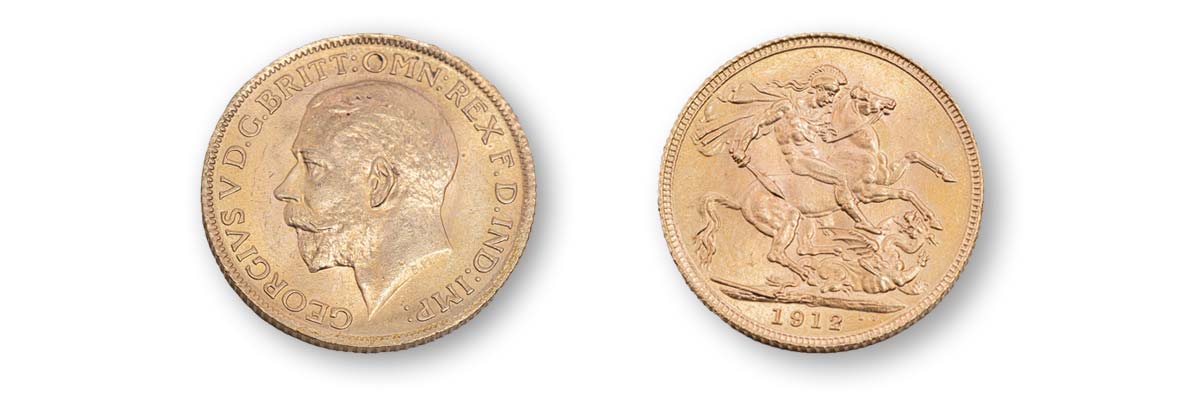 A gold, reeded edge coin displaying King George V’s head on the obverse. The reverse displays the image of Saint George on horseback slaying a dragon with the date 1912. The coin has the words "GEORGIVS V D.G.BRITT:OMN:REX F.D.IND:IMP:” surrounding the King’s head along the edge of the obverse. This is KM 820 weighing 8 grams of 0.917 purity gold which translates to 0.2355 oz AGW. The coin measures about 22 mm in diameter. Fine condition.
It is noteworthy to point out that this Gold Coin is dated 1912, the same year as the tragic sinking which took place April 14, 1912.
Recovered in 1987 from the wreck of the RMS Titanic
A gold, reeded edge coin displaying King George V’s head on the obverse. The reverse displays the image of Saint George on horseback slaying a dragon with the date 1912. The coin has the words "GEORGIVS V D.G.BRITT:OMN:REX F.D.IND:IMP:” surrounding the King’s head along the edge of the obverse. This is KM 820 weighing 8 grams of 0.917 purity gold which translates to 0.2355 oz AGW. The coin measures about 22 mm in diameter. Fine condition.
It is noteworthy to point out that this Gold Coin is dated 1912, the same year as the tragic sinking which took place April 14, 1912.
Recovered in 1987 from the wreck of the RMS Titanic
Titanic Inventory: 87-0091.A.13
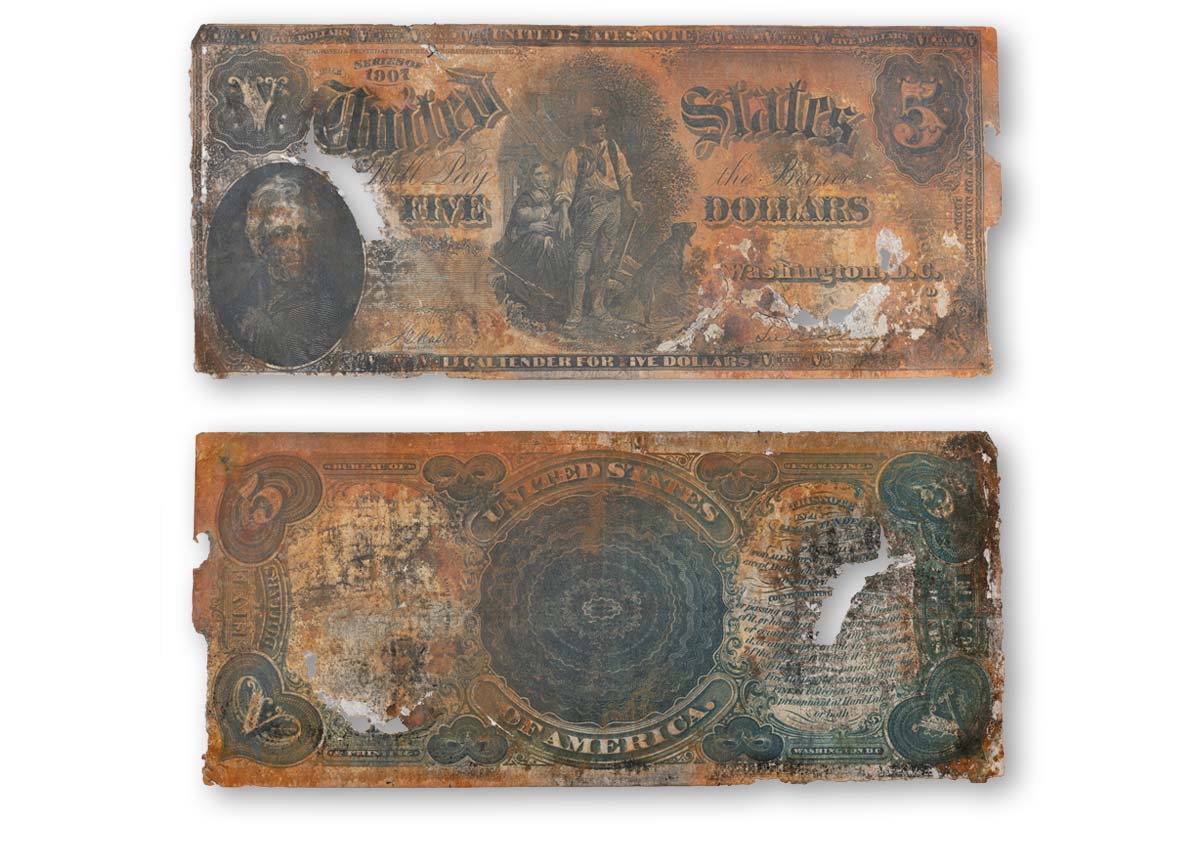 Considered by collectors one of the most sought-after bank notes, this was the last of the large (or "horse-blanket” size) notes issued in the United States. Historians refer to this $5 bill as the “Woodchopper” due to the central image (on the obverse) of an axeman with his family. A central design flanked by two ovals appears on the reverse. Stained to a rust color with edge deterioration, several 1/8” holes and paper loss of approximately 1” along the upper right frame of the portrait of Andrew Jackson.
Recovered in 1987 from the wreck of the RMS Titanic
Considered by collectors one of the most sought-after bank notes, this was the last of the large (or "horse-blanket” size) notes issued in the United States. Historians refer to this $5 bill as the “Woodchopper” due to the central image (on the obverse) of an axeman with his family. A central design flanked by two ovals appears on the reverse. Stained to a rust color with edge deterioration, several 1/8” holes and paper loss of approximately 1” along the upper right frame of the portrait of Andrew Jackson.
Recovered in 1987 from the wreck of the RMS Titanic
Titanic Inventory: 87-0097.151
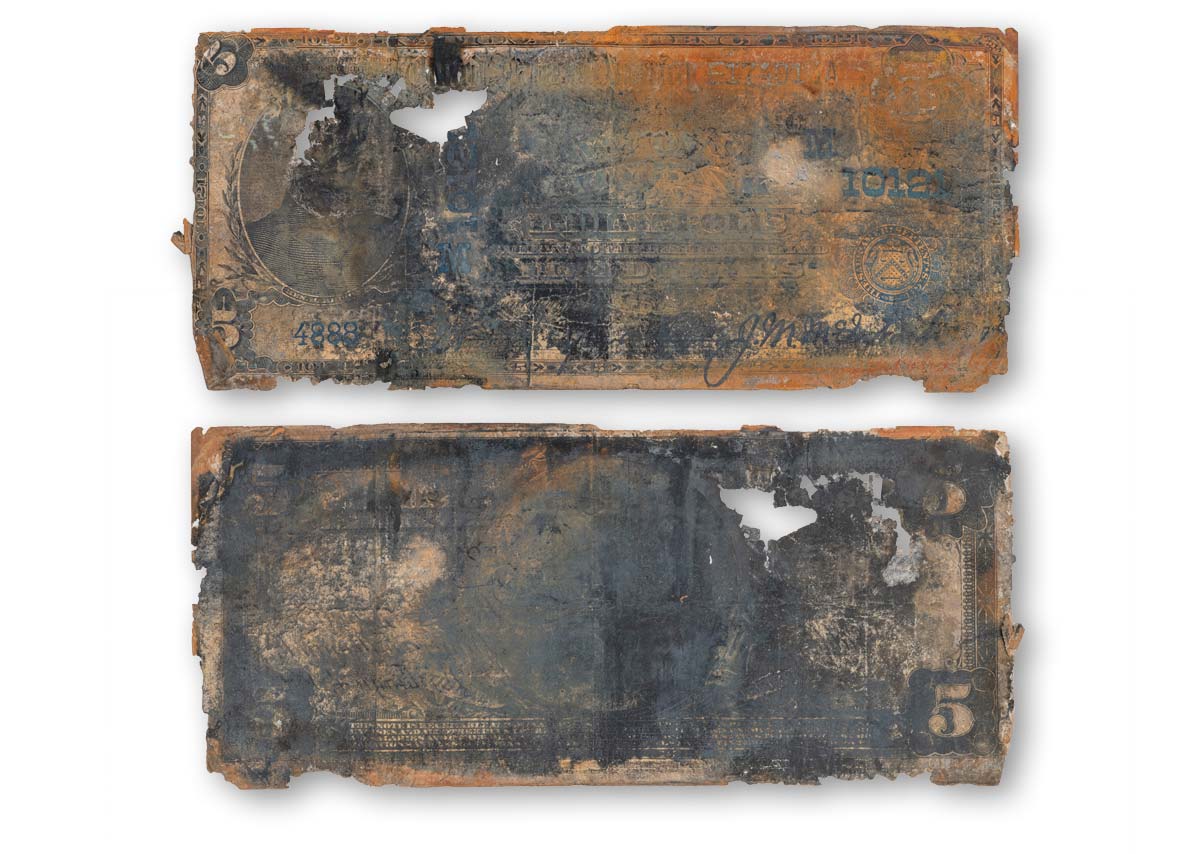 Although dated 1902, this “blue seal” bill was first issued in 1908. It was the the smallest paper denomination issued at the time. A bust of Ben. Harrison appears on the obverse, with Charles Burt’s engraving “The Landing of the Pilgrims” on the reverse. Many banks issued these notes. As is partially visible, this one was issued by the Union National Bank of Indianapolis. Rust-colored staining, edge erosion, paper loss on and above the image of Ben. Harrison
Recovered in 1987 from the wreck of the RMS Titanic
Although dated 1902, this “blue seal” bill was first issued in 1908. It was the the smallest paper denomination issued at the time. A bust of Ben. Harrison appears on the obverse, with Charles Burt’s engraving “The Landing of the Pilgrims” on the reverse. Many banks issued these notes. As is partially visible, this one was issued by the Union National Bank of Indianapolis. Rust-colored staining, edge erosion, paper loss on and above the image of Ben. Harrison
Recovered in 1987 from the wreck of the RMS Titanic
Titanic Inventory: 87-0097.073
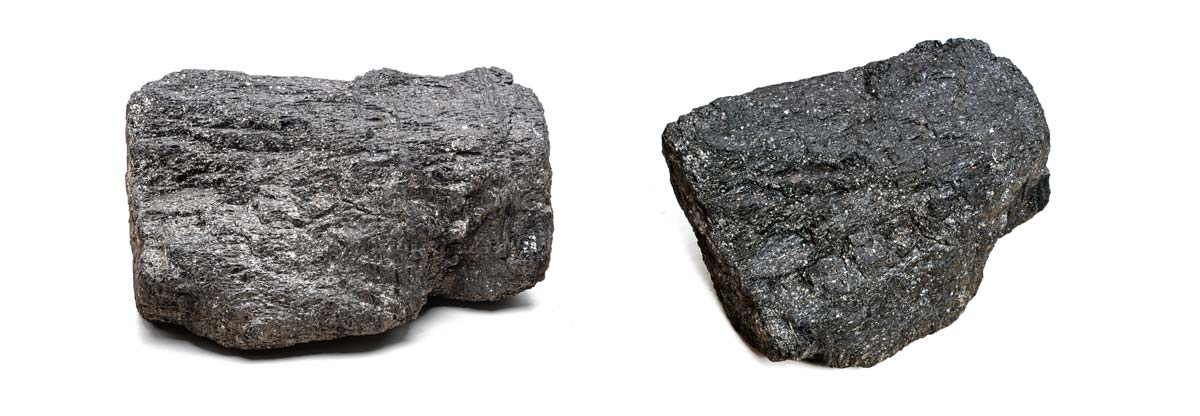 When the Titanic put to sea, it was the largest ship afloat, measuring 882 feet long and standing 175 feet tall. To power the largest ship in the world, engineers equipped her with two steam engines and one steam turbine. Combined, they produced 46,000 horsepower, consuming 600 tons of coal a day.
An irregularly-shaped block of coal measuring approximately 6” x 6” x 6.” (It should be noted that this piece is substantially larger than the piece of coal from the Titanic displayed by Ripley’s Believe It Or Not!)
Recovered from the wreck of the RMS Titanic
When the Titanic put to sea, it was the largest ship afloat, measuring 882 feet long and standing 175 feet tall. To power the largest ship in the world, engineers equipped her with two steam engines and one steam turbine. Combined, they produced 46,000 horsepower, consuming 600 tons of coal a day.
An irregularly-shaped block of coal measuring approximately 6” x 6” x 6.” (It should be noted that this piece is substantially larger than the piece of coal from the Titanic displayed by Ripley’s Believe It Or Not!)
Recovered from the wreck of the RMS Titanic
Titanic Inventory: 94-0036.0152





